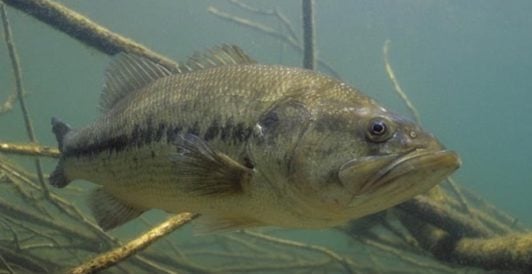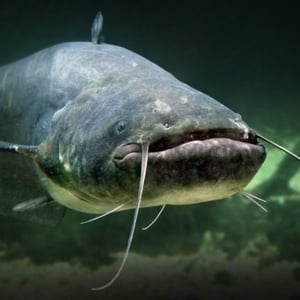Does your pond have what it takes to support catfish and bass? Catfish and bass both provide great fishing experiences. Catfish are perfect if you enjoy a relaxing evening down by the water just letting some punch bait float under a bobber. But, if you’re the kind of angler who likes the thrill of working a frog on the surface to land an explosive top water bite, you’re going for bass.
Thing is, a lot of fishermen and pond and lake owners like to fish both, so it’s no surprise that we are often asked if it is possible to stock both cats and bass in the same pond. To get bottom of this question, it’s important to understand that not all ponds are created equal.
Some factors about your specific pond may benefit one species more than another. Then again, maybe you are lucky enough to have a pond that will allow both to flourish.

Largemouth Bass Are Predatory Fish
Largemouth bass are hunters that like to stalk and catch their meal. If you examine the body of a bass, you’ll see that the bass is built to hide under logs, along weed lines or other forms of habitat waiting for their prey to swim by. Then they lunge forward with their big mouths to swallow their prey whole.
Largemouth bass use the entire water column to search for their next meal. This is why their coloration, or camouflage, varies from green and black on the top and sides to white on their bellies. When viewed from above they blend into the pond floor and vegetation. If seen from underneath the white matches the bright sunlight that passes through the water. Bass will primarily feed during the daylight hours because they rely heavily on their eye sight to catch their prey.
Channel Catfish Are Scavengers
Channel cats use their barbels, or whiskers, as sensory receptors to search for food on the bottom of the pond. Often this food is a dead fish or animal pieces that have sunk to the bottom producing a blood-scent trail that leads the catfish right to it. That’s why punch bait, stink bait or cut bait, and a lot of patience, works so well to catch catfish. Channel catfish can also be trained to eat pelleted fish feed to supplement what they can naturally scavenge. This will allow them to grow much larger and quicker than on natural resources alone. But, this practice can curb their desire to feed on other sources of food, like the bait on the end of your line. You may be able to get around this by creating your own bait with the pellet feed blended in.

While channel catfish are scavengers, there are some species of catfish that have predatory tendencies. These types of catfish will compete with bass for the resources in your pond. Even though blue catfish feed the same way as the channel catfish, using its barbels to find food, they also prey on your baitfish population. Blue catfish will also grow much larger than their channel catfish cousins, reaching upwards of 100 pounds in some large reservoirs. But bigger isn’t always better. A fish this big is a major competitor for the bass in your pond. Plus it's another hungry mouth depleting your baitfish population.
Catfish and Bass Can Co-exist
You can have your cake and eat it too! If you stock the right species and practice good pond management, channel catfish and bass can co-exist. In fact, having both species in your pond ensures all the resource will be used to their maximum potential. Plus, it'll give you and your guests a more diverse fishing experience. For more questions about how to keep channel catfish and bass in your pond, feel free to contact me at garrett@pondking.com.





